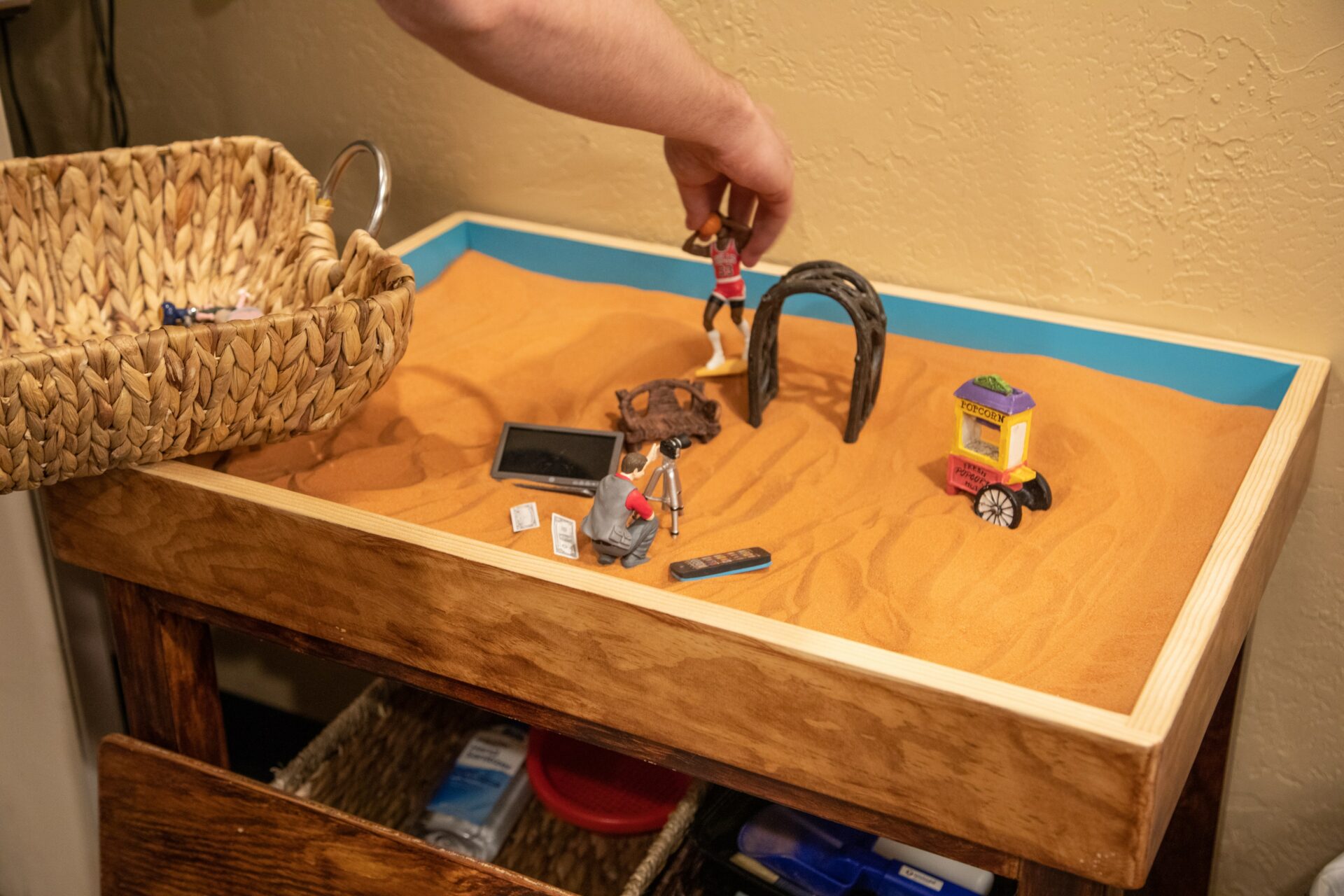By Anna McKenzie
Most of us haven’t played in a sandbox in years, and while we might jokingly refer to a vacation at the beach as “sand therapy,” neither of these activities are officially “therapeutic.” Sand can play a role in treatment, though, in the form of Sand Tray Therapy. Like art therapy, Sand Tray Therapy helps patients resolve cognitive and emotional issues nonverbally. It utilizes the mind-body connection to allow you to work through psychological trauma and distress in safe, non-invasive ways.
Types of Trauma Helped by Sand Tray Therapy
This unique experiential therapy can help patients who are struggling with many forms of trauma. It is not relegated to certain types and can assist all kinds of individuals, from children to adults, with the healing process.
Why are we talking about trauma? Because it is often the root of addiction and mental health issues. People who have endured emotional or physical distress through abuse, neglect, or danger can find safety at the sand tray table.
Sand Tray Therapy activates the imagination while providing distance from what’s happening in the sand tray itself. Unlike other therapies, a therapist may barely be involved in Sand Tray Therapy, giving patients space to fully engage in what they’re creating.

How Sand Tray Therapy Works
At The Meadows, we have a Sand Tray Therapy room full of figurines and toys of all shapes and sizes. Sand Tray Therapy techniques are primarily patient-focused, so while therapists may guide the process or ask questions, the main actor is the individual, who can choose figures and place them in the sand tray as they wish. While the patient makes decisions and organizes the figures, they are able to express themselves artistically and dramatically. Sand Tray Therapy sessions usually last for anywhere from 30 to 90 minutes.
During Sand Tray Therapy, patients can create artwork or set up scenes that allow them to act out pain, problems, or experiences from a third-person point of view. They are in control and can make decisions about what’s happening in the sand tray and why, allowing them to gain insights into their own mental and emotional state. They can work through issues without retriggering trauma since they have no need to discuss their personal experiences or feelings with another person. The therapist can facilitate and observe alongside the patient, asking questions and possibly providing further insights; however, therapists do not need to interact with the participant to foster the healing process. Sand Tray Therapy is designed to help patients come up with their own solutions to the conflicts or scenarios they create.
Activity allows our physical bodies to express concepts that our minds can’t fully grasp — even concepts that words can’t fully describe.
Because Sand Tray Therapy offers a tactile experience, it’s enjoyable and very useful to the kinetic and visual learning process. The tray table itself is often elevated so that participants can stand or sit as they work in the sand. It’s effective for children, teens, and adults, offering a creative outlet for working through cognitive distress. In fact, research has shown that Sand Tray Therapy improves resilience, positive self-expression, and psychological well-being.
Where Sand Tray Therapy Comes From
Sand Tray Therapy is based on Jungian psychology because it is image-focused. Swiss Psychiatrist Carl Jung believed that symbols give us a window into the deep-seated and inexpressible portions of our minds. Unconscious thoughts are able to manifest themselves to the conscious mind through imagery or symbols in the physical world.
Sand Tray Therapy offers symbols (figurines in the sand) to help patients understand what’s going on beneath the surface of their consciousness, where trauma may be embedded. It provides a path for healing through creative play and a safe environment, not requiring a great deal of interaction or any invasive techniques.

Why Experiential Therapies Like Sand Tray Therapy Are So Important
When it comes to recovery from addiction and mental health issues, talk-based therapies like Dialectical Behavior Therapy and Cognitive Therapy have proven to be very helpful (especially when the patient feels like his or her therapist is a trusted guide and ally). However, working through issues by talking about them can only help us so much. Our ability to mentally absorb and process information has its limits.
Complementing talk therapy with experiential therapies can help patients express themselves both verbally and nonverbally. We learn in many different ways; we also process our thoughts and feelings in many different ways. Through Sand Tray Therapy, we are able to better interpret the intangible through tangible expression.
People who have endured emotional or physical distress through abuse, neglect, or danger can find safety at the sand tray table.
Activity allows our physical bodies to express concepts that our minds can’t fully grasp — even concepts that words can’t fully describe. What affects our minds affects our bodies, and vice versa. In lieu of this, intentional movements or physical activities can often channel trapped survival energy, thoughts, and emotions, helping the mind heal through nonrational means.
Sand Tray Therapy for Addiction and Mental Health Issues
At The Meadows, we provide evidence-based therapies to help individuals heal from addiction and mental health issues. Sand Tray Therapy is one of the experiential therapies we offer to assist in the patient’s long-term healing process. We are dedicated to helping people resolve trauma in safe ways that allow them to find relief from painful issues that have been holding them back for years. To learn more about Sand Tray Therapy and other features of our treatment program, contact our Admissions specialists.

